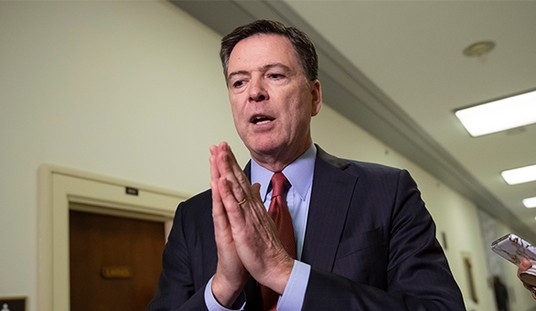Recently, we wrote a column here on Pajamas Media drawing attention to the problem of financial incentives in special education. Laura McKenna responded with a column challenging a number of our assertions. Since her column raises far too many issues to be dealt with adequately in a comment thread, we’d like to thank PJM for giving us the opportunity to respond with yet another column.
Our original column went over the results of an empirical study we had conducted, showing that special education enrollments grew much faster in states that fund special education on a per-student basis. In most states, but not all of them, when a school places a student into special education that school gets an increase in funding. The empirical evidence establishes that growth in special education enrollments has been fueled by the presence of these financial incentives.
McKenna’s responses to our evidence fall into four categories:
Appeals to emotion and superior personal experience. McKenna writes that since her son was diagnosed with a disability, “I am no longer just an academic who studies education policy from the ivory tower, but a parent on the front lines of the special education wars.” Most of her column discusses her own experiences and those of people she knows. The assumption of most of her column therefore seems to be that our statistical evidence is trumped by her perceptions of the system based on her direct experience.
There are three fatal problems with this. First, we, too, have direct, personal experience of special education. Second, we appealed to the evidence of national statistics, which perceptions based on personal experiences cannot refute. Third, even what McKenna reports of her personal experiences does not establish what she thinks it does.
Both of us are parents of disabled children. We, too, are not academics who study education policy from the ivory tower, but parents on the front lines of the special education wars.
The difference is, unlike McKenna, we do not assume that our subjective perceptions based on our personal experiences must be a fair and objective way of determining how the special education system as a whole functions. We went out and collected a large body of empirical data and used it to conduct a broad statistical study.
If McKenna isn’t willing to engage with the detailed statistical analysis conducted in our study – and her column doesn’t – then we don’t see how her personal experiences could refute it.
But even if they could, they don’t – because McKenna only writes about her difficulties in getting special education services, not a special education diagnosis. Our argument is that schools have a financial incentive to put a “special education” label on students, not that it has an incentive to provide them with good services once they have that label. We will return to this subject below.
In addition, contrary to McKenna’s overwrought suggestion, we did not call for anything that can be remotely characterized as a “crackdown [that] will lead to a witch hunt atmosphere that will create a hostile environment for disabled kids.” To the contrary, our main policy recommendation was to provide school vouchers to disabled children, as five states already do. Empirical research shows that not only do vouchers deliver better services to disabled students who use them, they also improve services for disabled students remaining in public schools.
It is partly because we are parents of disabled students that we are particularly concerned to examine this issue using systematic data. The misidentification of students as learning disabled when they are really only behind in school because of poor teaching or other factors has swelled special education enrollments and expenditures. Those increases have created a substantial level of resentment among families who are concerned that the growth of special education is taking resources away from other children, as well as from taxpayers generally. This backlash threatens funding and services for all disabled students. And the financial incentive to identify students as learning disabled (a lower-cost category) shifts resources away from students in higher-cost categories who really need greater disability services.
Parents of disabled students have an especially strong interest in taking steps to reduce the false identification of learning disabilities.
Misunderstanding of the issue. At the outset, McKenna makes a small but crucial mistake that becomes the basis of a whole line of argument in her column. She begins by characterizing our argument this way: “They believe that these kids have been given this label because the school districts want the federal money.”
But we never said anything about “federal money.” In fact, the federal government adopted reforms in 1997 that remove the financial incentive for diagnoses from the federal system of special education funding. It did this precisely because it acknowledged that funding incentives for diagnoses had become a problem. Federal funds are now distributed in a manner roughly similar to block grants; each state just gets a chunk of money for special education, and the size of the chunk isn’t affected by the number of students it has in special education programs.
But once the states get their federal money, they choose how it gets distributed to schools, along with state spending for special education. The issue isn’t where the money comes from, but how it gets distributed. Federal law requires states to fund special education, but it doesn’t control how they distribute it. As we wrote in our original column, a majority of states provide special education funds to schools on a per-student basis – and that’s what creates the financial incentive for diagnoses.
This mistake leads McKenna into a mare’s nest: “In fact, schools actually have a disincentive to diagnose kids. The money that they receive from the federal government is a fraction of the money that they actually spend on special education. The federal government only pays for 17% of the expenses for special education. State and local governments must pick up the rest of the tab. In our town, nearly half of the local school budget is devoted to special education.”
Once her initial confusion is corrected, it becomes clear that her argument doesn’t address the issue. She’s talking about the source of funding, but the issue is distribution. Schools are not the same thing as “state and local governments.” Yes, state and local governments pick up most of the tab for special education. Most of them do so by paying schools additional money for each student who receives a special education diagnosis. Thus, the schools have a financial incentive to diagnose.
While we’re on the subject, there is also widespread confusion about “costs” associated with special education, which we have recently tried to clear up here. At least some of what people identify as the “costs” of special education, especially for students with milder learning disabilities, are expenditures that schools were going to make anyway to help those students catch up. Getting a subsidy for a “cost” that a school would have carried anyway helps produce the positive financial incentive.
Appeals to improved diagnosis. McKenna argues that special education enrollments are up because of improved diagnosis. She cites improved understanding of Aspergers’ Syndrome, dyslexia, and attention deficit disorders. She also argues that we’re more motivated to identify and remediate disabilities because educational expectations have risen; there are fewer good jobs for students of limited ability than there used to be.
Better diagnosis of Aspergers’ Syndrome and attention deficit disorders cannot explain the special education growth we’re studying, because they’re in the wrong categories – autism and “other health disorders,” respectively. As we wrote in our original column, all the big growth is taking place in the category of learning disabilities. While the autism and other health disorders categories are growing, their growth is tiny when compared to the explosion of learning disabilities. Blaming these categories for the growth of special education is like saying that somebody’s sink overflowing caused the recent floods across the Midwest.
On the other hand, McKenna offers what sounds like a plausible story about why diagnosis of learning disabilities might have improved. And in our original study, we agreed that diagnosis of many disabilities has improved. Learning disabilities is probably one place where that has happened.
But the question then becomes: How much of the increase in special education can be attributed to improved diagnosis, and how much to the role of funding incentives?
What makes this question tricky is that the two possibilities are not mutually exclusive. Both forces could be operating at the same time and on the same students – that is, you might have students who are genuinely disabled but were not properly diagnosed until funding incentives pushed their schools to properly diagnose them.
So we need to state the question a little more precisely. How much of the growth of special education would have happened anyway even without financial incentives, because of improved diagnosis or for any other reason, and how much of the growth only occurred because of financial incentives?
As it happens, our study was aimed at answering this very question. We broke down the growth of special education in all fifty states in every year for ten years, and compared the year-to-year growth in states with “bounty” funding (that is, per-student funding that creates financial incentives) to the growth in states that had reformed their funding systems to remove financial incentives. We found that, year after year, two thirds of the growth in special education was associated with funding incentives. And when states switched from bounty funding to reformed funding, they saw a slowdown in their special education growth rates.
In other words, if the growth of special education has been due to improved diagnosis, then about two-thirds of that improved diagnosis happened only because of funding incentives.
But of course it may also be the case that only a tiny amount of that growth involved improved diagnosis, and the rest was due to funding incentives alone.
How can we tell the difference? Well, the best way would be to conduct a nationwide audit of special education placements. But McKenna says that would be a “crackdown” that would lead to a “witch hunt atmosphere.” So we guess that’s out.
In the meantime, we can only ask: Is it really plausible that 13% of all U.S. students are truly disabled? That the percentage of students diagnosed with learning disabilities has doubled solely because of improved diagnosis of bona fide learning disabilities? And that this improved diagnosis only happened because (coincidentally) states paid schools to produce additional diagnoses?
Appeals to the awfulness of the system. McKenna points out that large numbers of parents are not getting the special education services they’re entitled to under federal law, because the special education system “is designed to resist providing expensive services.”
She’s right. We’ve been saying the same thing for years. That’s one of the major reasons we support vouchers for special education students – so that those who aren’t getting the services they need can go to schools that will serve them.
McKenna seems to think that this somehow provides evidence against our thesis. She doesn’t say why, and frankly, we’re stumped. As we have already mentioned above, our argument is not about services but about diagnoses. McKenna doesn’t offer evidence that parents have difficulty getting diagnoses, only that they have difficulty getting services.
In fact, all this does is reinforce how powerful financial incentives are in special education. As we have pointed out many times before, the current system creates financial incentives for schools to label students as disabled and then not provide services. The label generates increased funding, but the services cost money. Schools therefore have a financial incentive to diagnose students and then not serve them – to “resist providing expensive services,” as McKenna puts it.
The “IEP” system mandated under federal law exists precisely to push schools to provide services that they wouldn’t otherwise provide because of the financial incentives not to. Unfortunately, the flaws in the IEP system (that’s a whole other story) are so serious that parents often can’t get the services they’re supposed to be entitled to.
So the more McKenna complains that she can’t get good services for her son, and that a lot of the people she knows can’t get services for their children, and that thousands of parents across the country say the same thing, the more she reinforces our point that financial incentives are the key problem with the status quo in special education.









Join the conversation as a VIP Member